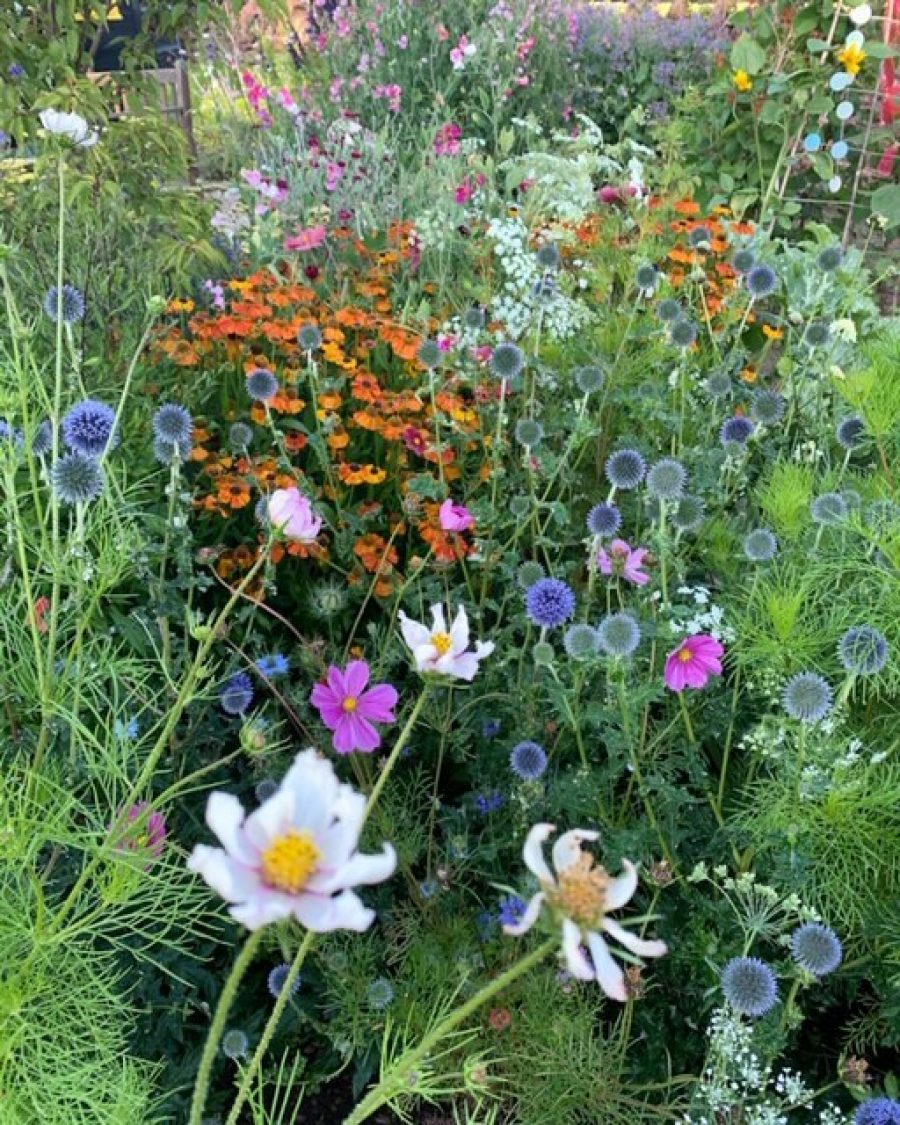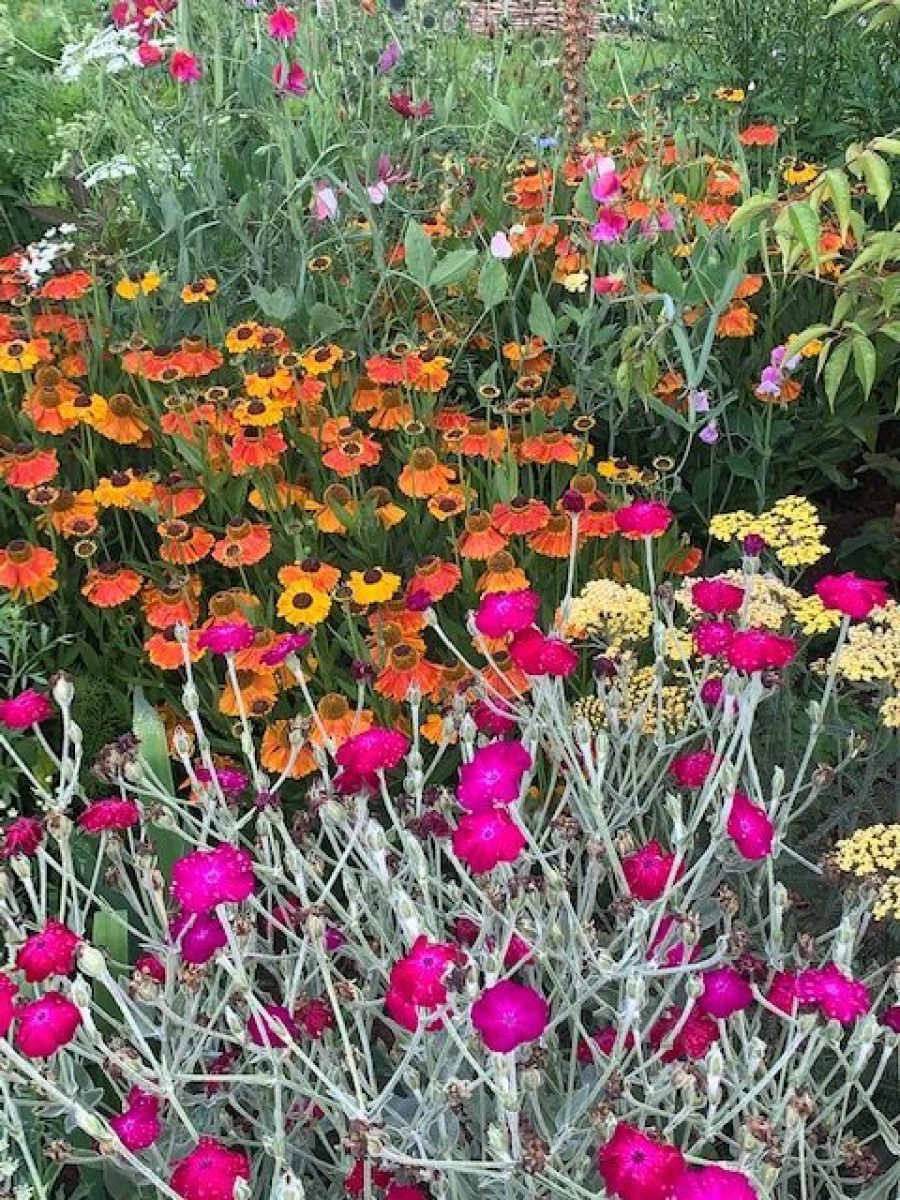By Claire Greenslade, Head Gardener

"Have you ever been scared to start a project in the garden because of the enormity of it? It happens to all of us, especially when deciding on the size of the flower beds. I see so many gardens with skinny flower beds and plants being made to behave themselves in their small allocated areas. If, like me, you love plants, then maybe you’ll understand when I say that I think flower beds are like sheds and greenhouses – never big enough! Plants need space to interact, to tumble and flow and spread out.
But it takes a brave person to cut out half the lawn on a chilly October morning with a vision of it being filled with colour by June. I worried that I should have done it in stages, a bit at a time, but two things stopped me; one, I knew that this would end in a terrible design, and two, I only had 3 days off work to get it all done. I knew that digging up the lawn by hand would almost definitely take me all three days, so I hired a turf cutter, and once I had that machine on hire, I thought I had better do a bigger bed to make it worthwhile!


Planting Flower Beds
Once the turf was cut I added some organic matter; I’m fortunate that the soil in my garden is really good quality and that we had some spare topsoil from another project. The planting was a complete experiment. Previous to moving, I had always lived in rented accommodation, so most of the plants I owned were in pots, and quite honestly, most looked desperate to get into the soil. I had a few perennials – Echinops, Helenium, Gaura, Asters – and these went straight in, along with my Rosa ‘Munstead Wood‘ and Rosa ‘Mutabilis‘.

I thought a little bit about heights of plants, colour combinations and how they might intermingle, but not too much, as my main aim was simply to get them in the ground, watch what happened, and learn from the plants. This was to be the experimental year after all. Where there were gaps, I planted tulips for some spring colour, and then I sowed plenty of seed (Too much, in fact – I am one of those that hasn’t yet learnt and sows the whole packet!). I sowed a mix of perennials and annuals from poppys, foxgloves, tree spinach, californian poppies, salvias, cosmos, sprawling sweet peas and Ammi.

I thought that the perennials would perhaps be slower to flower and might only bloom fully in the second year so that I would need more annuals, but I was wrong. Most have been fantastically floriferous in their first year, and the bed has been full – REALLY full – actually too full! Now I am making the most of the light evenings to make some notes. I’m looking at what needs moving, what needs more space, what would look better partnered with that plant over there. I am saving seed for next year and taking cuttings and making plans for moving things around in the winter.
What I Learnt From My First Year
The bed needs to be even bigger to cope with my love of plants (My name is Claire Greenslade. I have a problem. I am a plant hoarder). It’s also very easy to remember just how large some plants in your flower beds can actually get.

The birds and insect life in the garden has doubled, which is a great argument for removing more turf. In the long run I think any turf we have will be planted. We have one area planted with snowdrops, crocus and mini daffs already.
Finally, and you may not believe me at first, but orange goes with EVERY colour."
More of Claire’s expert gardening advice is available on our website.
Please help us keep Hestercombe open
Over the last 30 years Hestercombe’s historic landscape and its unique, world famous gardens have been lovingly restored.
However, Hestercombe’s closure due to the Covid-19 pandemic has had a devastating impact on Hestercombe Gardens Trust’s finances. We’re an independent charity without the safety net of larger organisations, and we must now raise substantial funds to ensure Hestercombe continues to thrive and to help secure its magnificent heritage for future generations.
We would be incredibly grateful for any donation that you are able to give. Thank you.
Gift Aid
If you are a UK taxpayer and you select ‘Please Gift Aid this donation’, the UK Government will give Hestercombe Gardens Trust an additional contribution of 25% at no extra cost to you.
